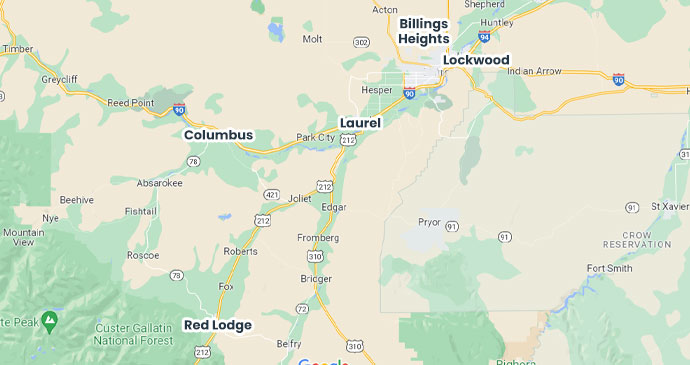"Luckily I have never needed to use a restoration company, but as someone who has worked closely with Alpha Omega, they have treated my clients very well, and have always been honest and very transparent. Although their whole team is very professional and punctual, Carissa and Sonya have been great to work with."
Preventing Commercial Water Damage From Freezing Temperatures
Winters in Montana can be brutal, with lower than average temperatures and higher than average snowfall. Commercial properties can experience severe water damage if not prepared, including issues from frozen pipes, mold, and roof damage.
Commercial Building Fall Checklist

Be proactive by following this Fall checklist to prepare your commercial building for the most common winter water hazards.
Prevent frozen pipes. If left unwrapped, with a small leak or in too low of temperatures, your business’s pipes could freeze. When pipes freeze, ice inside starts to expand and the built up pressure causes the pipes to crack and burst. In addition to no water due to frozen conditions, a burst pipe can lead to water damage and flooding. If the pipe is not discovered right away, it can also lead to mold growth. Mold damage is a problem that should be dealt with quickly by a professional.
- Insulate your pipes against bitter cold temperatures to prevent them from freezing.
- Feeling a cold draft? Older commercial buildings tend to have more ways for cold air to sneak in, from window panes to door jambs. Close up the air leaks to prevent cold air from getting in and warm air from getting out. Not only will this keep your building warm and prevent your pipes from freezing, but will also help keep your energy bill down.
- Turn the thermostat up. If your property’s thermostat is set below 55 degrees Fahrenheit, the water inside your pipes will freeze. So even if your building is vacant, make sure to keep the heat on.
Conduct commercial roof maintenance to avoid water damage. There are many ways Winter can wreak havoc on your roof and cause water damage in your business. Ice dams are the major issue roofs have that can cause the most damage. They form when snow and ice begin to melt. If the snow and ice do not melt completely and refreeze, a “dam” forms. Ice dams prevent any more melted snow from draining easily off the roof. This standing frozen water can lead to water backup, causing ice to lift and pierce your roof shingles, forming ways for melting snow and ice to leak into your home. These leaks often go unnoticed for a long period of time and cause structural damage, water damage, mold and mildew. By conducting routine roof maintenance, you can help prevent common roof issues during the colder months.
- Clean out your gutters. As Fall happens, many leaves, twigs, and other debris blow off the trees and into your gutters and downspouts. Make sure to thoroughly clean out your gutters and downspouts before winter hits. Then, when snow and ice melt, it can cleanly and easily run through your gutters and away from your home.
- Cleaning snow off your roof. If you can do safely, remove snow from your building’s roof to help relieve some of the weight and pressure. The extra weight from snow and ice gathering on your roof can become too much for the structure, causing it to start to collapse under the extra weight.
- Roof shingles repair. Now in the fall, while the weather is still nice, climb up onto your roof (again, only if you can safely) and inspect the roof to check for any cracks, holes, or damage where leaks could potentially get in. If you cannot get onto the roof,hire a professional like Alpha Omega.
HVAC System Cleaning. During the spring, summer, and fall, critters, grass, leaves, and debris can get caught in your HVAC unit. Conducting routine maintenance,to help keep the system running through the colder months. Don’t risk it breaking down during an exceptional cold spell.
- Inspect your HVAC unit. It is recommended to have your system checked regularly by a professional.
- Conduct an HVAC system cleaning. Again, this is a very involved process, and hiring a professional is recommended. If you’re interested in try to DIY, follow these HVAC cleaning tips.
Does Your Business Need Emergency Water Damage Restoration?
Contact Alpha-Omega Disaster Restoration. At Alpha Omega, we have a trained, certified, and licensed emergency response team available 24/7 to assess your situation, make a plan, and work directly with your insurance company, as well as your tenant’s. We want to restore your business as quickly and safely as possible with minimal disruption. While Winter can bring on many different hazards that could lead to water damage, your commercial property can be prepared if an emergency strikes. During the winter months, watch for small signs of water damage, and potential mold problems, and call us at the first sign of trouble.
Alpha-Omega Pros is a fully certified professional restoration company serving Billings, MT and the surrounding areas.













